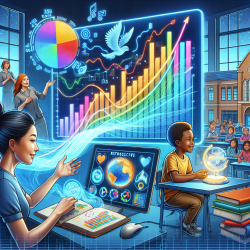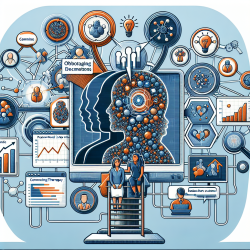Introduction
The assessment of autism in Deaf/Hard-of-Hearing (D/HH) youths presents unique challenges due to overlapping behavioral phenotypes and a lack of standardized diagnostic tools. The recent research article, "Assessing Autism in Deaf/Hard-of-Hearing Youths: Interdisciplinary Teams, COVID Considerations, and Future Directions," offers valuable insights into overcoming these barriers through interdisciplinary approaches and virtual service delivery. This blog aims to help practitioners enhance their skills by implementing these research outcomes and encourages further exploration in this critical area.
Understanding the Challenges
Children who are D/HH are diagnosed with autism later than their hearing counterparts, often due to behavioral phenotypic overlap, lack of validated assessment tools, and limited access to qualified clinicians. The research highlights the importance of understanding these challenges and adopting interdisciplinary approaches to improve early diagnosis and intervention.
Implementing Interdisciplinary Approaches
The research emphasizes the role of interdisciplinary teams in effectively assessing autism in D/HH youths. By integrating expertise from audiology, speech/language pathology, psychology, and education, practitioners can develop a comprehensive understanding of each child's unique needs. Key recommendations include:
- Utilizing a team-based approach to gather diverse perspectives and insights.
- Incorporating parent and caregiver input to ensure a holistic assessment.
- Adapting existing assessment tools, such as the Autism Diagnostic Observation Schedule (ADOS-2), to accommodate D/HH youths.
Adapting to COVID-19: Virtual Assessments
The COVID-19 pandemic necessitated a shift to virtual assessments, which posed additional challenges for autism diagnosis in D/HH youths. The research outlines strategies for conducting effective tele-assessments, including the use of caregiver-mediated tools like the TELE-ASD-PEDS. Practitioners are encouraged to:
- Leverage technology to maintain continuity of care while ensuring safety.
- Adapt assessment protocols to suit virtual environments, focusing on caregiver involvement and observation.
- Continuously evaluate the effectiveness of virtual assessments and make necessary adjustments.
Future Directions and Encouragement for Further Research
While the research provides a solid foundation for improving autism assessment in D/HH youths, there is a need for ongoing research and development of standardized tools. Practitioners are encouraged to:
- Engage in professional development and training specific to D/HH populations.
- Collaborate with interdisciplinary teams to share knowledge and best practices.
- Advocate for the development of validated assessment tools tailored to D/HH youths.
By embracing these recommendations, practitioners can enhance their assessment skills and contribute to the timely diagnosis and intervention for D/HH youths with autism.
To read the original research paper, please follow this link: Assessing Autism in Deaf/Hard-of-Hearing Youths: Interdisciplinary Teams, COVID Considerations, and Future Directions.










